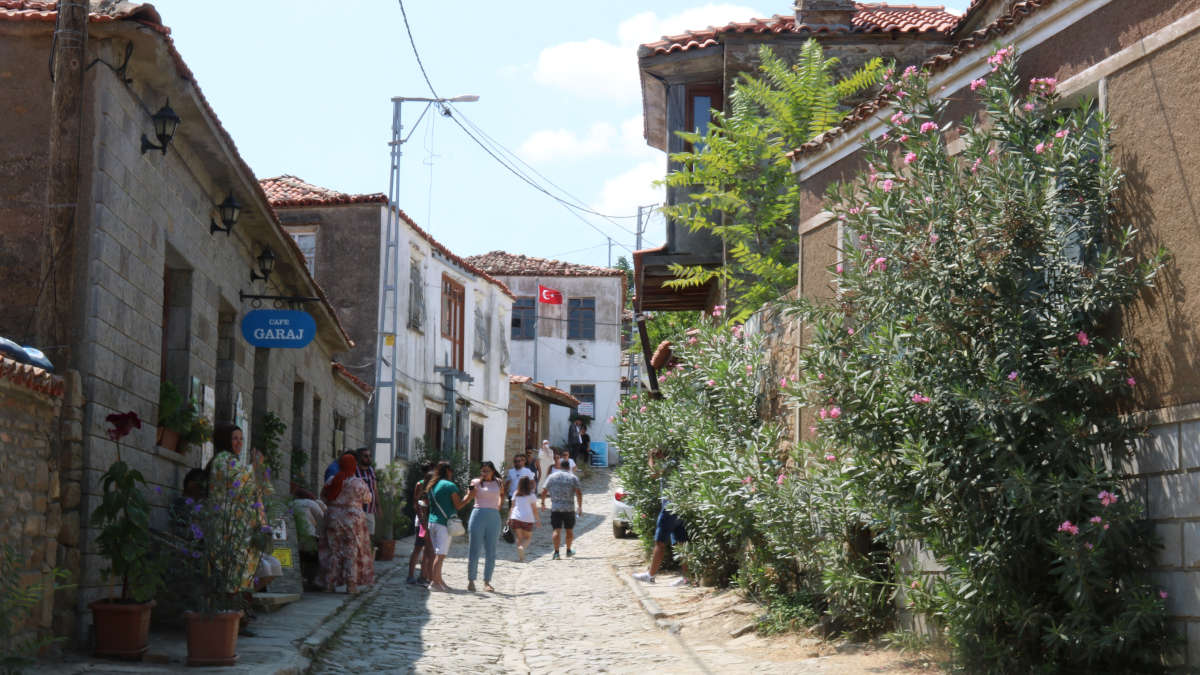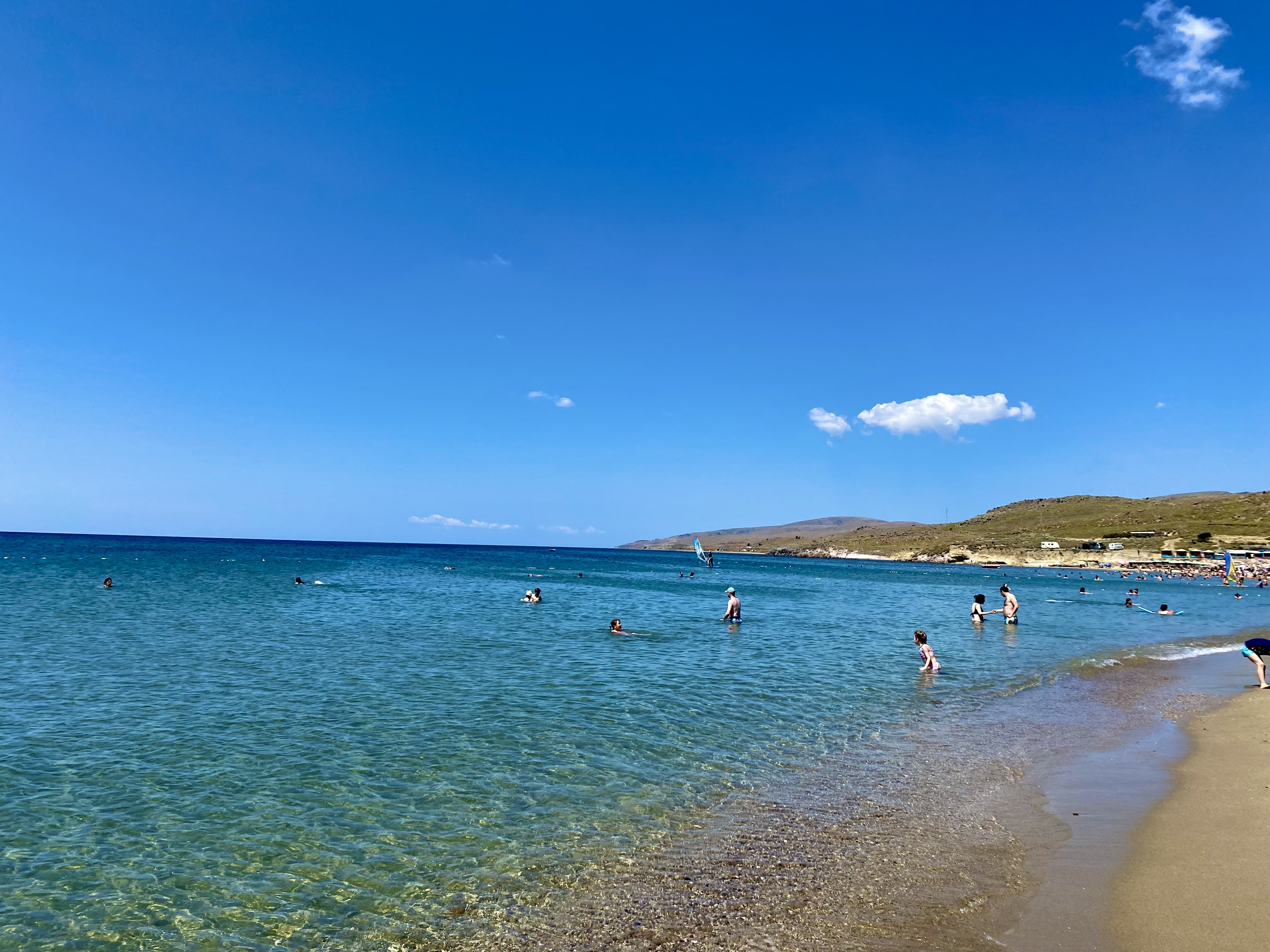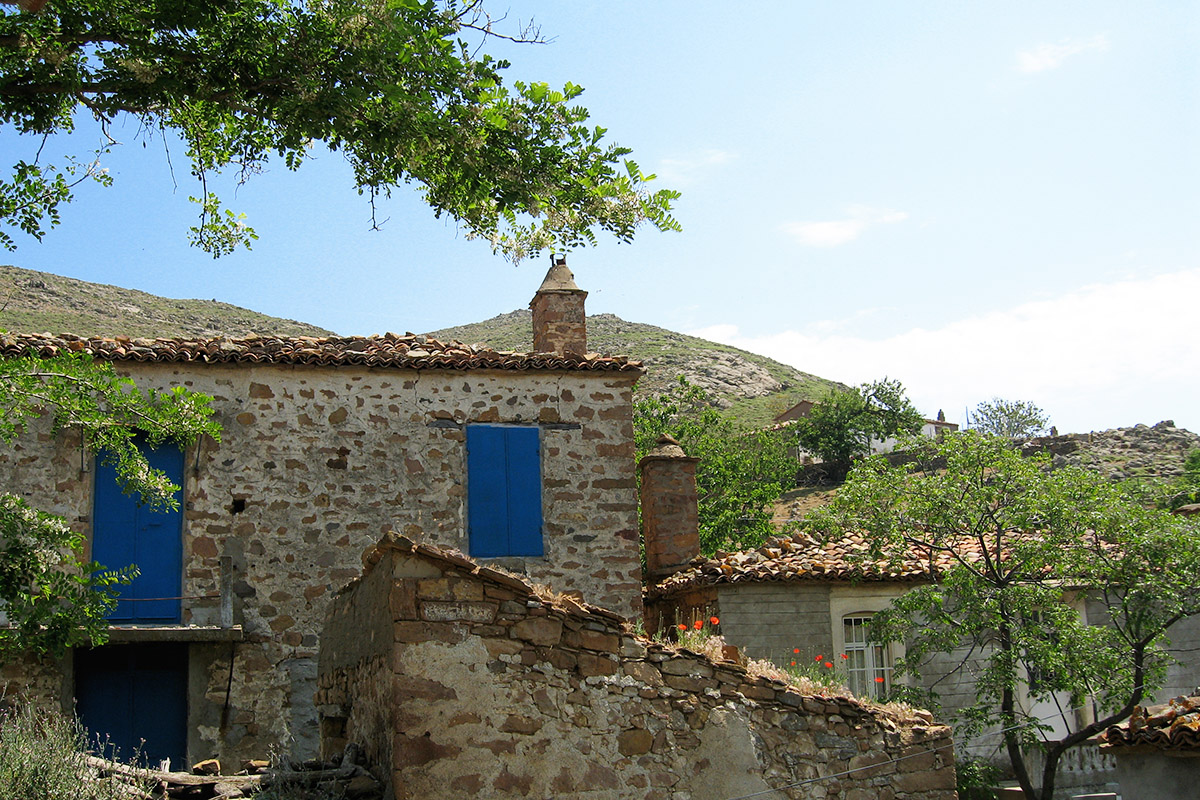Do you ever get tired of the city's noise and endless hustle and dream of a place where time flows more slowly? Well, that dream comes true in Gökçeada! Beyond being Turkey's largest island, it's a unique sanctuary where you can listen to the whisper of the wind, cool off in the shade of olive trees, feel the soul of stone houses, and breathe in the iodine-rich scent of the Aegean Sea. If you're looking for more than just an ordinary holiday, you should add exploring the island's authentic spirit to the very top of your list of things to do in Gökçeada. This guide will take you to the heart of the island—its famous villages, full of stories.
Visit Historic Greek Villages Like Zeytinli and Tepeköy
The best way to understand the soul of Gökçeada is to get lost in the cobblestone streets of its time-defying villages. These villages are more than just stone and mortar; each is a living, breathing history museum. Protected as urban conservation areas, these settlements are the most vivid witnesses to the island's multi-layered cultural heritage.
Zeytinli (Aya Teodoroi), is the island's most popular and perhaps most vibrant village. Just 3 kilometers from Gökçeada's center, it's built on a slope surrounded by olive groves, as its name suggests. Walking through the village streets, you might feel like you're on a movie set. But what makes this place special isn't just its preserved stone architecture. Zeytinli is also the birthplace of the Ecumenical Patriarch Bartholomew of Constantinople and home to the island's oldest church, Agios Georgios Church. In recent years, the village has been reborn with lively cafes opened by Greek families returning to their ancestral lands. This transforms Zeytinli from a static tourist spot into a dynamic community that actively lives and celebrates its cultural heritage. So, you're not just looking at historic houses here; you're witnessing how a culture is being revitalized.
As you head towards the island's peak, you'll be greeted by Tepeköy (Agridia). Built on the slope of the volcanic Aya Dimitri hill, this village is the highest settlement in Gökçeada and offers breathtaking views. Its Greek name, Agridia, meaning small fields, beautifully summarizes the village's geography. Tepeköy is also famous for the Feast of the Assumption of Mary, held every year on August 15th, which brings together people from all over the island. If you're on the island around this time, don't miss this joyous celebration. While visiting the village, you can see the Evangelismos Theotokou Church, dating back to 1832, and take a break at the nearby Çınaraltı (Ispilya) picnic area, resting under the shade of a 625-year-old monumental plane tree and drinking from a natural spring.
Besides these two popular villages, Gökçeada has other stories to tell. Dereköy (Shinudi), once the largest village in the Balkans, now has a melancholic yet impressive atmosphere with its mostly empty houses. The historic public laundry in the middle of the village stands as a silent monument to the vibrant communal life of the past. For those seeking a more lively atmosphere, Kaleköy, one of the busiest spots in the summer, offers a different experience with its harbor and the ruins of a Byzantine-era castle. Every village in Gökçeada tells a different story. If you have more time on the island, we recommend checking out our detailed Gökçeada village guide. The contrast between Zeytinli's revival and Dereköy's melancholic silence reminds us that preserving buildings alone is not enough to keep a culture alive; it's the people who give it its true spirit.

Windsurf or Watch the Action at Aydıncık (Kefalos) Beach
After rejuvenating your soul in the calm and authentic villages of Gökçeada, it's time for a bit of adrenaline! Located on the southeast of the island, about 9 kilometers from the center, Aydıncık (Kefalos) Beach invites you to a completely different world. With its approximately 1200-meter-long golden sandy beach and turquoise sea, this place will mesmerize you at first sight and prove why Gökçeada is a surfing paradise.
So, what makes Aydıncık so special for surfers? The answer lies in the wind. Thanks to its geographical location, the island gets wind for an average of 300 days a year, creating perfect and stable conditions for windsurfing and kitesurfing. This feature has been attracting surf enthusiasts in recent years, especially those looking to escape popular but overcrowded spots like Alaçatı. In other words, this is a hidden paradise for surfers, offering both great wind and a more relaxed, authentic atmosphere.
I can almost hear you saying, But I've never surfed before. Don't worry at all! Aydıncık Beach welcomes surfers of all levels. Numerous surf schools lined up along the coast offer beginner lessons with professional instructors. Even if you don't have your own gear, you can rent everything you need from these schools. Whether you're a beginner meeting the waves for the first time or a master used to dancing with the wind, you'll surely find an adventure that suits you in Aydıncık.
Aydıncık is not just a beach; it's a lifestyle and an international meeting point. A community has formed here, with athletes from all over the world, especially from Balkan countries, led by Bulgarian surfers. The surf clubs on the beach have become social hubs where these enthusiasts store their equipment year-round and come together. This is gradually changing the island's tourism identity; Gökçeada is evolving from just a summer holiday destination into a dynamic, year-round sports center. Even if you don't surf, just watching the colorful sails and kites gliding across the sky is a pleasure in itself. Moreover, the Salt Lake right next to the beach adds a unique natural beauty to this adrenaline-filled experience by hosting flamingos and other migratory birds.

Take a Break in Zeytinli, Famous for its Dibek Coffee and Mastic Pudding
After recharging with the island's wind, we turn our route back to Zeytinli for that famous flavor break that will crown your Gökçeada experience. The delightful aroma of coffee and mastic that greets you on the village's cobblestone streets is proof of how strong the island's gastronomic identity is. Sitting down at a café in Zeytinli for a break is a must-do on your list.
The coffee you'll drink here is a bit different from the Turkish coffee you might know. It's called dibek coffee. The name comes not from the brewing method, but from how the coffee beans are prepared. Instead of being ground in modern machines, the roasted coffee beans are pounded and crushed with a pestle in large stone mortars (called dibek). This traditional and laborious method gives the coffee a more intense aroma and a unique, full-bodied texture. Sipping this coffee is not just consuming a beverage; it's witnessing a centuries-old craft and tradition.
Of course, this feast of flavors isn't complete on its own. The best companion to dibek coffee is another of the island's signatures: mastic pudding (sakızlı muhallebi). This light dessert, made with the perfect harmony of fresh milk and mastic gum, is often served with a drizzle of sour cherry sauce. The intense taste of the coffee and the refreshing aroma of the pudding create an unforgettable balance on the palate. Besides this duo, you can also find a refreshing frappe on the menus of the village cafes.
Experiencing this in Zeytinli is much more than just sitting at a café and ordering. It's a ritual of slowing down time in the village's historic square, under the shade of centuries-old plane trees, among stone houses adorned with geraniums. What you're buying here isn't just a cup of coffee and a bowl of dessert; it's that priceless moment where you feel the island's soul, tranquility, and authentic atmosphere to your core. These famous flavors of Zeytinli are just a part of the island's rich gastronomic culture. To discover more, you can check out our article on Aegean cuisine delicacies.

Conclusion: While You're Here...
If you've fallen under Gökçeada's spell and want to extend your trip a bit, there are wonderful alternatives to explore nearby. You can take a short ferry ride to the neighboring island of Bozcaada, famous for its vineyards and more boutique atmosphere. If you're a history enthusiast, you can return to the mainland and embark on a poignant and meaningful journey through the Gallipoli Peninsula Historical National Park.
Bibliography
For more official information on Gökçeada's sustainable tourism and its Cittaslow (Slow City) identity, you can visit Turkey's official tourism portal: GoTürkiye - Gökçeada.
Frequently Asked Questions (FAQ)
Question 1: What is the best time to travel to Gökçeada?Answer: The ideal period for a sea, sand, and sun holiday is between June and September. However, thanks to the island's famous wind, you won't experience sweltering heat in the summer. For a quieter experience, nature walks, and village tours, the spring (April-May) and autumn (September-October) months, when the crowds have thinned, are also excellent choices.
Question 2: Which areas are recommended for accommodation in Gökçeada?Answer: The choice of accommodation depends entirely on your expectations. To be in the heart of the island, close to restaurants and shops, Gökçeada center (Fatih neighborhood) is ideal. For an authentic experience, you can choose boutique hotels or stone mansions in villages like Kaleköy, Zeytinli, and Bademli. If you are planning a surf-focused holiday, the surf hotels and pensions in the Aydıncık area would be the right choice.
Question 3: How can I get to Gökçeada?Answer: Transportation to Gökçeada is provided by ferries departing from Kabatepe Port in the Eceabat district of Çanakkale. Ferry services are more frequent in the summer, but due to high demand, it is highly recommended to book online, especially if you are traveling with your vehicle.


 English
English Türkçe
Türkçe